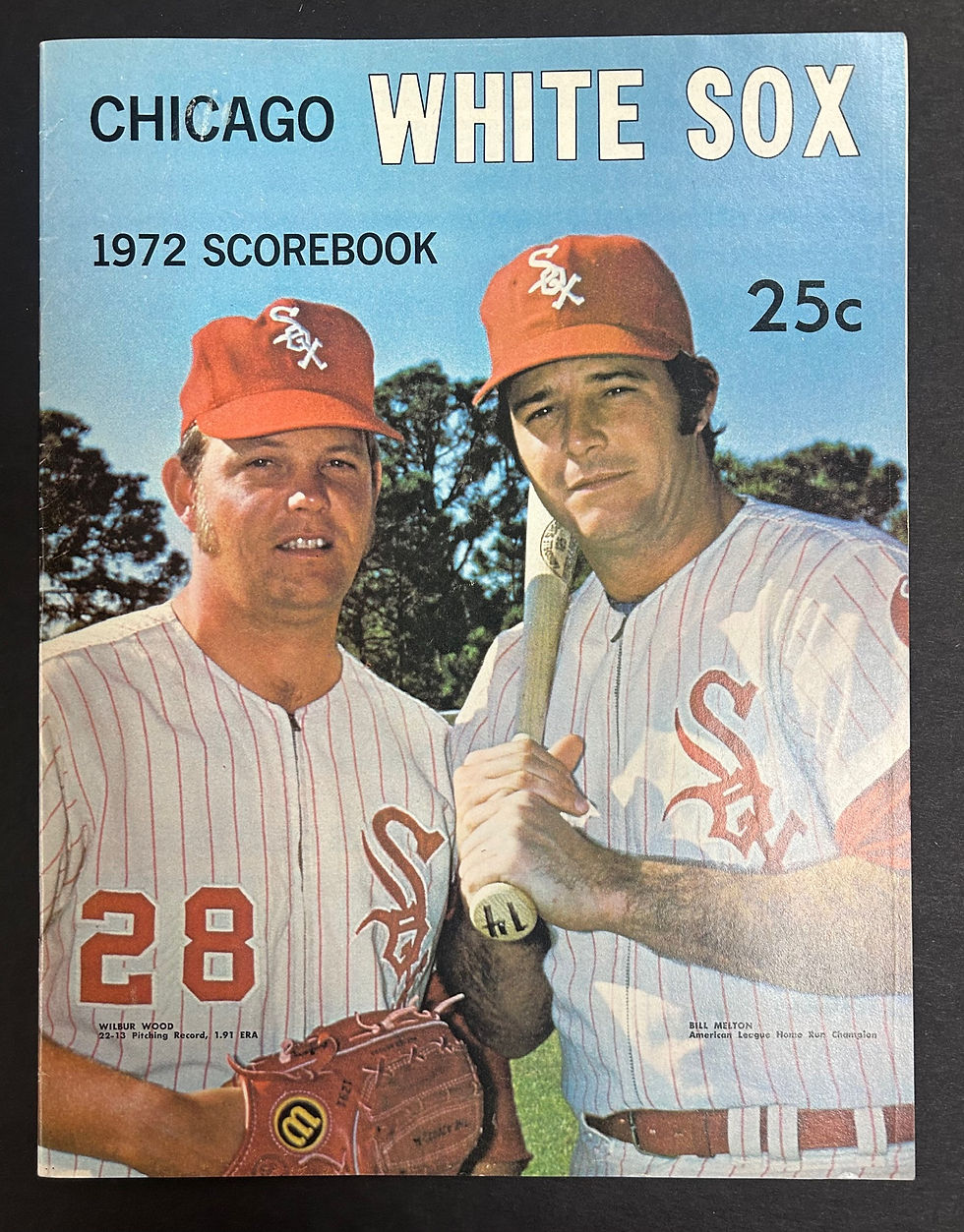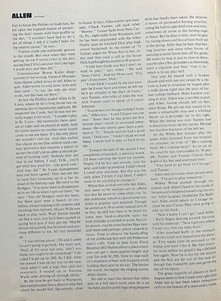An ode to Dick Allen — a deserving Hall of Famer
- Mark Potash
- Jul 27
- 6 min read
When the White Sox acquired slugger Dick Allen from the Dodgers for left-handed pitcher Tommy John, his reputation as a volatile, combative player who was tough to manage preceded him. The trade still was considered a big win for the Sox. "Allen ... isn't nearly as controversial or difficult to handle as has been pictured," Sun-Times reporter Jerome Holtzman wrote when the deal was made.
But when training camp opened in February, Allen was nowhere to be found. It was the beginning of a strange contract holdout in which Allen miscommunicated not only with the White Sox, but his own agent. He agreed to a contract then he didn't. At one point, Sox general manager Roland Hemond was unable to return a phone message from Allen because the last digit of Allen's phone number was missing from the message.
And when Allen finally signed a $125,000 contract — on April Fool's Day no less — it coincided with the start of the first player's strike in baseball history. So Allen reported to Sarasota, Fla., but no one else was there. He continued to work out, the strike was settled on April 13. And three at-bats into his debut with the Sox, Dick Allen homered to give Wilbur Wood a 1-0 lead against the Royals. And it was just the beginning of a glorious, tumultuous era in White Sox history that seemed destined to end too soon.


Dick Allen was one of those rare athletes who was worth the trouble. He endured a lot of abuse coming up in professional baseball, and his demeanor didn't hide the scars. He was moody, defiant, reclusive and private. (There's a reason why a guy like Jackie Robinson was hand-picked to break the color barrier.) Allen was a victim and his own worst enemy at the same time.
But the White Sox and manager were a perfect match in 1972. Allen's non-conformity irked previous teams and teammates, but Tanner had no problem having one set of rules for Allen and another for the other 24 players on his team.
"A man of his caliber as a hitter knows when he needs batting practice and when he doesn't," Tanner said the day the Sox acquired Allen. "If he wants to skip it, that doesn't bother me."
Allen was even better than advertised in 1972. He hit .308 (third in the American League) and led the AL with 37 home runs and 113 RBIs to win the AL Most Valuable Player award in a rout. He was eight points in batting average (behind Rod Carew) from winning the Triple Crown.(And Allen was leading in all three Triple Crown categories on Sept. 8 between games of a double header at .318 with 33 home runs and 100 RBIs).
But not even those gaudy numbers tell the tale of Dick Allen's impact on the White Sox. The Sox were already on the upswing in 1971` with Tanner and Bill Melton (a league-leading 33 home runs) — their attendance improved from a dreadful 495,355 in 1970 to 833,891 in 1971.
But it was Allen who breathed life into the franchise (and quashed talk about the Sox moving out of Chicago) in 1972. The Sox, who finished 29 games out of first place in 1969, 42 games out in 1970 and 22 1/2 games out in 1971, were in first place as late as Aug. 29 before fading in September to finish second (87-67 in the strike-shortened season), 5 1/2 games behind the Athletics.


And even then, with 12 games to go the Sox had a chance to get within three games of the A's after beating them in 15 innings in Oakland on Sept. 19 — with 24-game winner Wilbur Wood on the mound. But Reggie Jackson and Sal Bando homered off Wood early and Kenny Holtzman beat the Sox 6-3 and it was all but over.
The 1972 season would end up being the peak of Allen's White Sox career. (He was rewarded with a reported three-year, $675,000 contract that made him the highest paid player in baseball history.) In 1973, Allen was hitting .301 (eighth in the AL) with 16 home runs (second) and 41 RBIs in late June (a pace for 37 homers, 95 RBIs) when he suffered a hairline fracture of his leg. He came back too soon, played one full game (and went 3-for-4) and made two pinch-hitting appearances and was done for the season, playing in just 72 games.

In 1974, Allen was hitting .309 (seventh in the AL) with 32 homers (first) and 88 RBIs (second) in mid-August. After going 16 games without a home run, Allen was out of the lineup with a stiff shoulder and eventually disinterest as the Sox fell out of contention in the AL West. After taking batting practice and infield before a game with the Angels at Comiskey Park on Sept. 14, Allen told his teammates he was retiring and left the park. That was the end of the Dick Allen era in Chicago. (He would play three more seasons — two with the Phillies and one with the Athletics, but was a shell of his former self and officially retired after the 1977 season with a .292 average, 351 home runs and 1,119 RBIs.
In the end, Allen's three seasons with the White Sox marked the best time of his career and effectively put him over the top for the Hall of Fame. Though his last two seasons ended prematurely, he produced at a career clip or better when he was in the lineup.
His .988 OPS and .589 slugging percentage in 1972-74 were the best in baseball (Willie Stargell was second in both at .972/.581).
Allen's ..398 on base percentage was third in baseball — behind future Hall of Famers Joe Morgan (.416) and Rod Carew (.406).
Allen's .307 batting average was eighth in baseball (and second in the American League behind Carew's .345.
Allen's 181 OPS+ in that three-year span was the best in baseball, ahead of future Hall of Famers Stargell (173) and Reggie Jackson (159).

And while Allen's three seasons with the sox each ended in disappointing — falling short in 1972; the injury in 1973; leaving early in 1974 — he wasn't the clubhouse-cancer distraction he was reputed to be. And while quitting on your team is never a good look, when Allen lost interest, he wasn't selfish — he wasn't even interested in padding his league-leading home run and RBI totals.
That's one way of looking at it, of course. But that's the effect Dick Allen had when he was with the White Sox — especially if you were a teenager. I can't explain it. Billy Williams and Ron Santo were as good or better statistically on the other side of town, but there was something compelling about Allen that made you anticipate every at-bat. Even his strikeouts were a thing of beauty. He had the baseball version of the "it" factor. I'm glad he'll live forever in baseball history. He deserves it.

In 1973, when Allen was out with a leg injury, Sports Illustrated wrote a feature on Allen.














































Comments